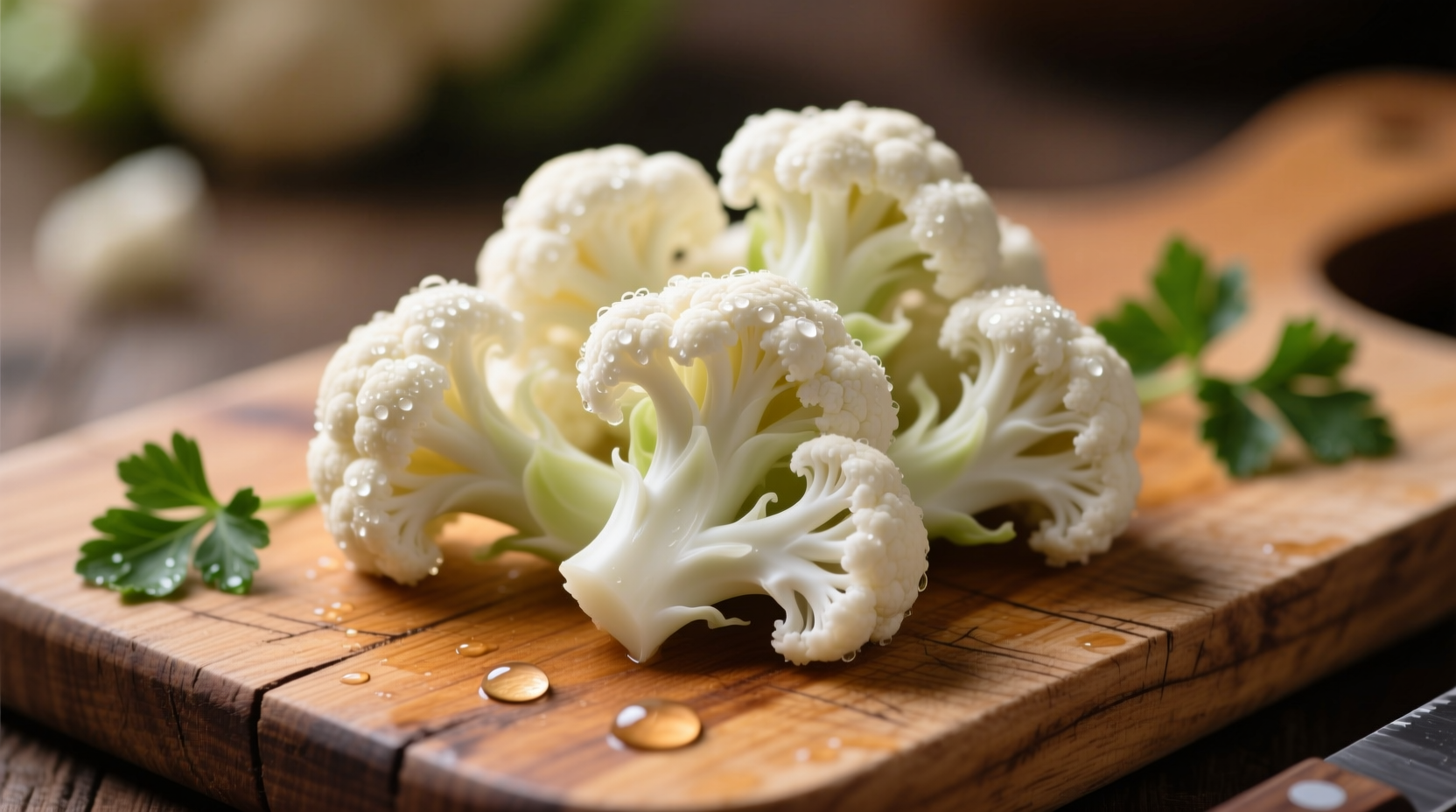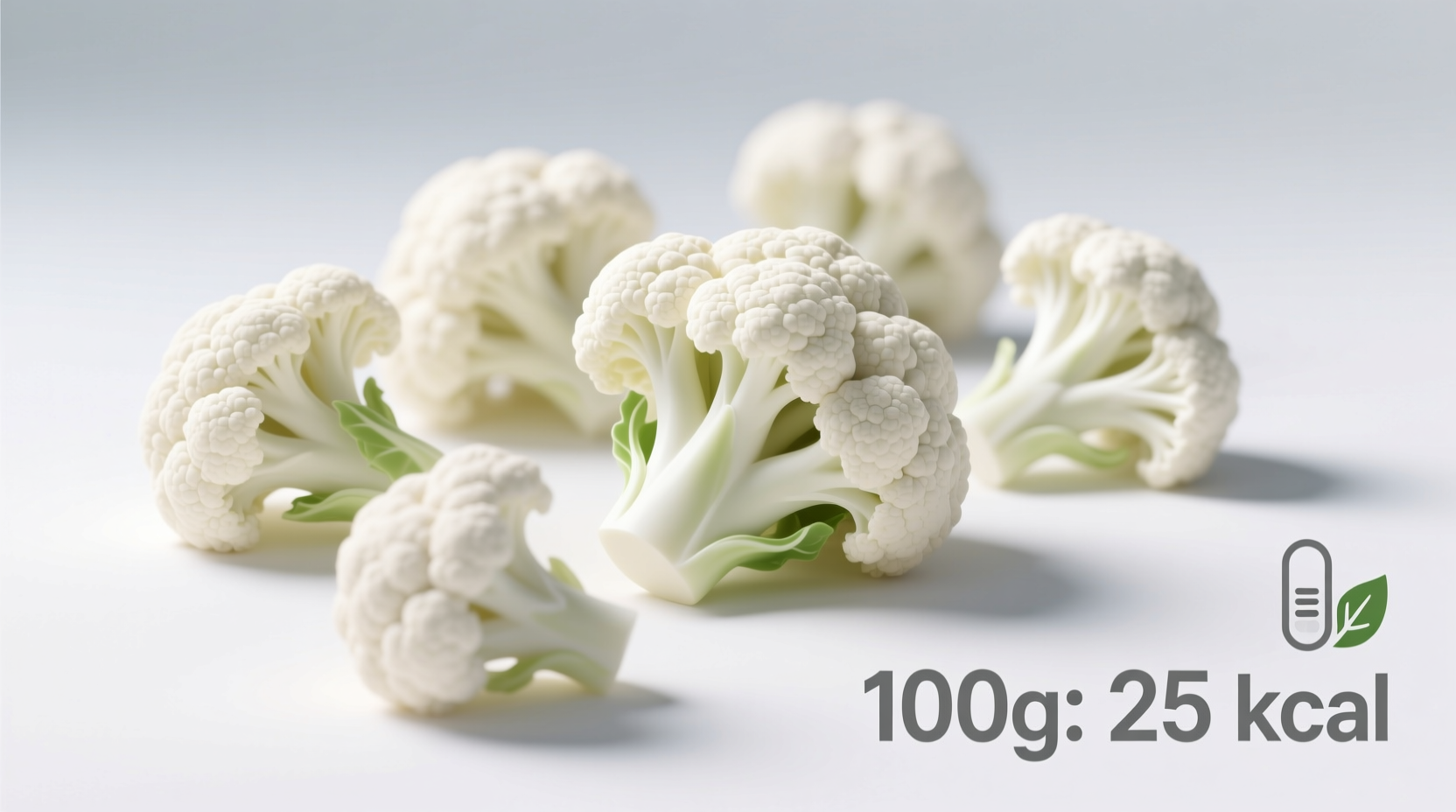One cup (100g) of raw cauliflower contains 25 calories, making it an excellent low-calorie vegetable option for health-conscious eaters and those managing their weight.
Discover exactly how cauliflower fits into your nutrition goals with this comprehensive guide. Whether you're tracking macros, following a specific diet, or simply curious about this versatile vegetable, you'll find precise calorie information for every preparation method and serving size.
Understanding Cauliflower's Calorie Content
Cauliflower has earned its reputation as a nutritional powerhouse among cruciferous vegetables. According to the USDA FoodData Central, this versatile vegetable delivers remarkable nutritional value with minimal caloric impact. The calorie count remains impressively low whether you enjoy it raw, steamed, roasted, or transformed into popular alternatives like cauliflower rice.
| Serving Size | Preparation Method | Calories | Carbohydrates (g) |
|---|---|---|---|
| 1 cup, chopped (100g) | Raw | 25 | 5 |
| 1 cup, chopped (100g) | Steamed | 28 | 5.3 |
| 1 cup, chopped (100g) | Roasted | 30 | 5.5 |
| 1 medium head (587g) | Raw | 147 | 29 |
| 1 cup, riced (100g) | Raw | 25 | 5 |
How Cooking Methods Affect Calorie Count
While cauliflower's base calorie content remains consistent, preparation methods can influence the final nutritional profile. Steaming preserves most nutrients with minimal calorie increase, while roasting concentrates flavors but may slightly increase caloric density as water content reduces. The most significant calorie variations occur when adding fats or sauces:
- Plain preparation: Adds no additional calories beyond the vegetable's natural content
- With olive oil: One teaspoon (5ml) adds approximately 40 calories
- Cheese sauces: Can increase calories by 100+ per serving depending on quantity
- Cream-based preparations: Significantly increase both calories and fat content
For those tracking calories precisely, weighing cauliflower before and after cooking provides the most accurate measurement, as water loss during cooking concentrates the remaining nutrients and calories.
Why Cauliflower's Calorie Profile Matters for Healthy Eating
Cauliflower's remarkably low calorie density makes it an exceptional choice for various dietary approaches. With only 25 calories per 100g, it delivers substantial volume and fiber for minimal caloric investment. This characteristic supports several popular eating patterns:
- Weight management: Provides satisfying volume with minimal calories, helping control hunger
- Keto diets: Low net carb content (3g per 100g) fits within carbohydrate restrictions
- Diabetes management: Low glycemic impact helps maintain stable blood sugar levels
- General wellness: High nutrient-to-calorie ratio supports overall nutritional adequacy
Compared to higher-calorie alternatives, cauliflower offers impressive versatility. For example, cauliflower rice contains about 75% fewer calories than traditional white rice, while cauliflower mash provides a fraction of the calories found in regular mashed potatoes.

Maximizing Cauliflower's Nutritional Benefits
To get the most nutritional value from cauliflower while maintaining its low-calorie profile, consider these practical tips:
- Minimal cooking: Steam or microwave briefly to preserve nutrients while enhancing digestibility
- Raw consumption: Enjoy as crudités with hummus or Greek yogurt dip for added protein
- Flavor enhancement: Use herbs, spices, lemon juice, or vinegar instead of high-calorie sauces
- Meal prep: Chop and store in airtight containers for quick access throughout the week
- Variety: Try different colored varieties (orange, purple, green) for diverse phytonutrient profiles
Research from the National Institutes of Health indicates that consuming cruciferous vegetables like cauliflower regularly may support various aspects of health, including cardiovascular function and inflammation reduction, making its low-calorie profile even more valuable.
Practical Applications for Calorie-Conscious Cooking
Incorporating cauliflower into your meals doesn't require complicated techniques. These straightforward approaches maintain its low-calorie advantage while adding culinary variety:
- Riced cauliflower: Pulse in food processor for 30 seconds, then sauté with minimal oil
- Steamed florets: Perfect as a side dish with lemon zest and black pepper
- Roasted wedges: Toss with paprika and garlic powder before roasting for maximum flavor
- Blended soups: Puree with vegetable broth for a creamy texture without dairy
- Raw applications: Add to salads or enjoy as a vehicle for healthy dips
When tracking calories for meal planning, remember that 100g portions provide the most consistent measurement across different preparation methods. Digital kitchen scales offer the most accurate way to measure portions, especially when cauliflower has been processed into rice or mash.
Frequently Asked Questions
How many calories are in a whole head of cauliflower?
A medium whole head of cauliflower (approximately 587g) contains about 147 calories when raw. The exact count varies based on the specific size and water content of the head.
Does cooking cauliflower increase its calorie content?
Cooking cauliflower without added ingredients increases calories only slightly due to water loss. One cup (100g) of raw cauliflower has 25 calories, while the same volume steamed contains 28 calories. Significant calorie increases occur only when adding fats, oils, or sauces during preparation.
Is cauliflower lower in calories than broccoli?
Yes, cauliflower is slightly lower in calories than broccoli. One cup (100g) of raw cauliflower contains 25 calories compared to 34 calories in the same amount of raw broccoli. Both vegetables offer excellent nutritional profiles with minimal caloric impact.
How does cauliflower compare to potatoes in terms of calories?
Cauliflower has significantly fewer calories than potatoes. One cup (100g) of raw cauliflower contains 25 calories, while the same amount of raw potatoes contains approximately 77 calories. This makes cauliflower an excellent lower-calorie alternative for dishes like mashed "potatoes" or rice substitutes.
Can I eat unlimited cauliflower while dieting?
While cauliflower is very low in calories, consuming excessive amounts could potentially affect digestion due to its high fiber content. Most nutritionists recommend including 1-2 cups of cruciferous vegetables like cauliflower daily as part of a balanced diet. Its high water and fiber content naturally promotes satiety, making overconsumption unlikely for most people.











 浙公网安备
33010002000092号
浙公网安备
33010002000092号 浙B2-20120091-4
浙B2-20120091-4